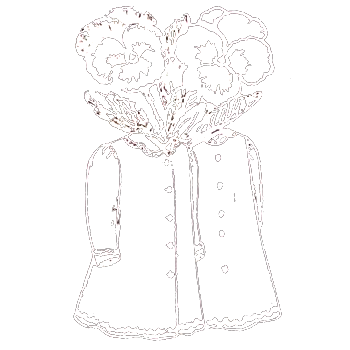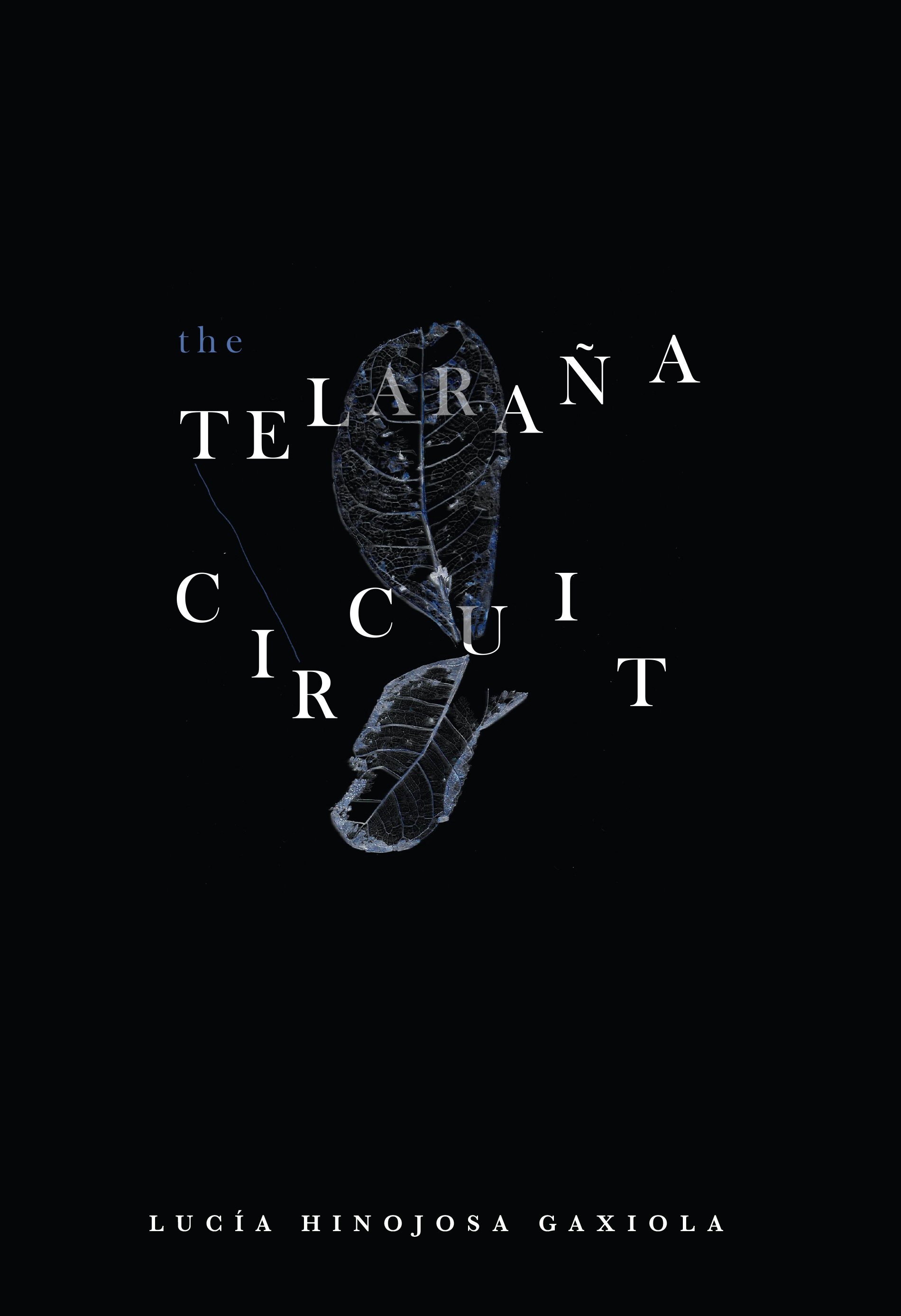the Telaraña Circuit by Lucía Hinojosa Gaxiola
To review or teach this book, please contact Tender Buttons Press.
THE TELARAÑA CIRCUIT is Lucía Hinojosa Gaxiola’s first book of poems, a deeply felt and sustained investigative thought-web of material and immaterial memory. Through different sectional lenses, she constructs a poetic portrait of her aunt who was, aptly, an archeologist. In this, she creates a series of visual and sonic poem-glyphs that score archaeologies of personal and cultural memory, where each cycle spins and sings new registers of connective depth. This bilingual text blossoms into a mesh of charged, fractal elements: each line or “fragment” imbued with the full presence of the whole.
$22 • 2023 • 176 pp
ISBN 978-0-927920-21-6 paperback
To review or teach this book, please contact Tender Buttons Press.
THE TELARAÑA CIRCUIT is Lucía Hinojosa Gaxiola’s first book of poems, a deeply felt and sustained investigative thought-web of material and immaterial memory. Through different sectional lenses, she constructs a poetic portrait of her aunt who was, aptly, an archeologist. In this, she creates a series of visual and sonic poem-glyphs that score archaeologies of personal and cultural memory, where each cycle spins and sings new registers of connective depth. This bilingual text blossoms into a mesh of charged, fractal elements: each line or “fragment” imbued with the full presence of the whole.
$22 • 2023 • 176 pp
ISBN 978-0-927920-21-6 paperback
To review or teach this book, please contact Tender Buttons Press.
THE TELARAÑA CIRCUIT is Lucía Hinojosa Gaxiola’s first book of poems, a deeply felt and sustained investigative thought-web of material and immaterial memory. Through different sectional lenses, she constructs a poetic portrait of her aunt who was, aptly, an archeologist. In this, she creates a series of visual and sonic poem-glyphs that score archaeologies of personal and cultural memory, where each cycle spins and sings new registers of connective depth. This bilingual text blossoms into a mesh of charged, fractal elements: each line or “fragment” imbued with the full presence of the whole.
$22 • 2023 • 176 pp
ISBN 978-0-927920-21-6 paperback
Reviews
“This is a book that studies form, means, memory and perception; if hers a book of water, it is one that includes rain, evaporation, lakes and tears, snowfall and the glacier. The Telaraña Circuit & other poems exists as not purely collage, but a kind of layering,”
—Rob McLennan’s blog, July 14, 2023
“For Lucía, the poem manifests in an astounding array of media and may take the form of pulsating, handwritten notations; heirloom archeological illustrations; and wordless, faded slides. Behold the celebration of the mind’s ability to perceive the infinite interrelations between the animate and inanimate realms, the vibrations resulting from the friction between the two, and their convergence onto printed matter. TELARAÑA is alive and radically open. Enter the book and synchronize your breath to the rhythms of its ongoing motion; it’s a standing invitation.”
— Mónica de la Torre
From Carolina Ebeid's ANTEMANO / BEFOREHAND:
"THE TELARAÑA CIRCUIT opens with a video still of the poet’s hand performing a ritual at the mouth of a cave in the archeological site of San Martín Huamelulpan. In the recording, we hear rhythmic scratching on the site wall as Lucía’s fingers transcribe the bits of tepalcates, ceramic and rock patterns from an archeological illustration and text her aunt, Margarita, produced decades before. A disarticulated kinship story told in palimpsestic time, as they both, years apart, inhabit the same slanted light hitting the wall in jagged angles. It’s an ancient music, the scratch-scratch, recorded in these poems. We also sense it in the scans of her handwriting, the crisscross back and forth of the eraser, the hand impressing itself on the page. “Every mark on paper is an acoustic mark” Susan Howe affirms. Lucia’s work itself proposes that to listen involves the whole body.
"These are glyphs to decipher: x-rays of the chest cavity, a warm impression on a pillow where the elbow had been. We learn to read anew, to turn our heads slightly and study the page as a field, and the field (excavation site, river, dirt plot) as a text. In the poem “mantra” the person becomes a document that can be translated into a list of the elements that make up the human body, elements shared with other mammals, insects, plants, geologic matter. Telaraña is woven with an ample notion of connection, wide and deep. The poet discloses the surface of the page as a meeting place for vital ancestral relation, a nowhere, a now here.
"Poetics of friction, then, arrives to a mystical zone, which for her is the zone of socio-political possibility. A memory dis/membered and re/membered through body-memory, nerve-memory. Un registro escondido en la cóclea. “Olvidar 1993 / Forgetting 1993” archives the recording of silent remembering in the environment of the present, where each frame holds time. NAFTA changes the sonic architecture while bringing back memory through listening. In “tallar o llorar / wipe or weep” we hear the political soundscape of artistic creation in public space. The hand intervening, painting the statue, the monument, the hand of the state that scrubs off the protest."
Lucía Hinojosa Gaxiola reads from THE TELARAÑA CIRCUIT at the Poetry Project. New York City, May 19, 2023.
from “Infinite Dream Circuits” by Pablo Helguera
This past Friday Dannielle and I attended a poetry reading and collaborative performance celebrating the publication of the Mexican poet Lucía Hinojosa Gaxiola’s book The Telaraña Circuit (published by Tender Buttons Press) in an event where she performed with the artist Guadalupe Maravilla, organized by the Poetry Project at St. Mark’s Church. As we waited outside in the church’s patio for the doors to open I observed that the gathered crowd was clearly a sampling of the downtown literary intelligentsia, with many individuals appearing to be Mexican academics or writers, giving me the feeling that we were more in Coyoacán than in the East Village.
/
While the selection of the Pao Yu story at Los Sures was not meant to literally refer to Dreamers (or at least I never thought of it that way until this moment: sometimes as artists we do not see the most obvious connections in the projects we develop ) in retrospect I now realize how the story of immigration is a never-ending, collective dream— perhaps, in the words of Lucía Hinojosa, a dream circuit where we seek to find the answer to these questions:
where (what) is place?
who (what) makes place?
who (why) are we
place?

